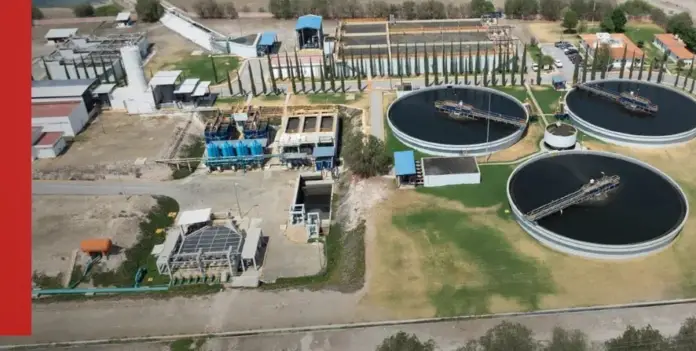Refugio Delgado, an expert in water issues, points out that the drought is an opportunity to vindicate oneself, to look at wastewater treatment plants

They see in the treatment plants an option to provide water, at least for the domestic activities of thousands of families in the Southern Zone of Tamaulipas.
Refugio Delgado, an expert in water issues, points out that the drought is an opportunity to vindicate oneself, to look at the wastewater treatment plants and to get the most out of them for each inhabitant who uses at least 200 liters of water a day to survive.
“In the two water treatment plants in Tampico and Madero, 3,000 liters per second are supplied to the population, 75% (2,500 liters) is the wastewater that is collected and must be treated.”
Treatment plants in Tamaulipas
According to the Tamaulipas Department of Hydraulic Resources, there are 47 treatment plants in operation in the state, two of them and the most important are located in the Morelos neighborhood of Tampico and in Tierra Negra, the border between Ciudad Madero and Altamira, but they are not collecting the liters they should due to lack of infrastructure.
“They are not at 100 percent of their capacity to treat, so a rehabilitation is required, a reconstruction at a given time of the collection systems in main collectors in pumping stations and in pressure lines that bring the sewage to the Tierra Negra plant the 1,500 liters per second and to the Morelos plant the 300 liters per second that are missing and that this is optimized with reuse.
He mentioned that since 2010, the Francisco I. Madero Refinery has been using the Tierra Negra plant to use 600 liters per second of treated water.
“Then a reverse osmosis plant was built and is already operating, which is a tertiary treatment of the best quality, to treat 200 liters for its gasoline production processes and others.”
This represents a crucial precedent to create a strategic plan and stop dumping treated water into receiving bodies so that it better reaches homes in the region.
The specialist who collaborated in the planning of both treatment plants said that the resource can be used for household tasks.
“It would be a supply line for treated wastewater for cleaning purposes, watering gardens that should be regulated and to see if it can be used for personal hygiene, that is the future of the treatment and reuse of wastewater.”
He pointed out that this plan does not require a large investment, it is like a “natural gas” line that at the time was designed for a small sector.
The reuse of treated water should be the salvation to face future water crises in southern Tamaulipas.
Source: milenio







